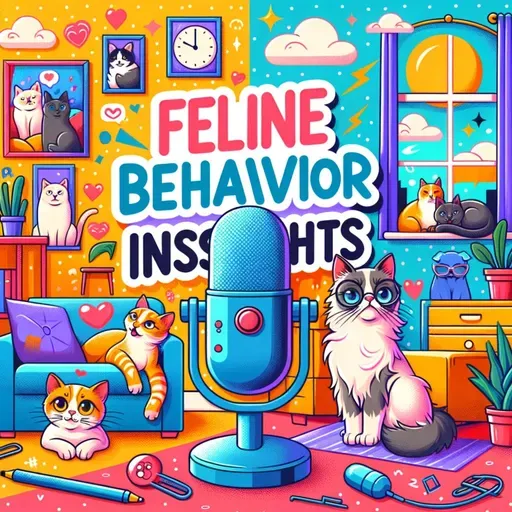
01 September 2025
Understanding Feline Behavior: Decoding Cats' Subtle Cues and Mysterious Habits
Feline Behavior Insights
About
Feline behavior is a fascinating mix of subtle cues, instinctual habits, and mysterious actions that have intrigued people for centuries. Cats communicate primarily through body language, with their posture, tails, ears, and eyes all conveying intricate messages about their emotions and intentions. Tuft & Paw notes that when interpreting a cat’s mood, listeners should look at the whole picture: a stretched-out, relaxed cat feels safe and open, while a tense, ball-shaped cat may be frightened or uncomfortable. Context is key—body language shifts quickly depending on sights, sounds, and even scents in the environment.
Tail movement provides some of the clearest insight into a cat's current state of mind. According to Express Vets Buford, an upright and relaxed tail usually signals happiness and confidence, while a puffed-up tail is meant to look intimidating, indicating fear or high agitation. If the tail is low or tucked, the cat likely feels anxious or threatened. Tails can also quiver when cats are excited to see someone or anticipating a positive experience.
Ears and eyes add more detail to the emotional portrait. Calm and relaxed cats will typically have neutral ears and partially closed or softly blinking eyes, as described by Best Friends Animal Society. Slow blinking at a cat is even considered, in feline social signals, to be a sign of trust. Conversely, pinned-back ears or a fixed, wide-eyed stare can reveal stress or defensiveness.
Cats use their behaviors to show affection, too. When cats rub their heads, chins, or bodies against someone, they’re using scent glands to mark their favorite humans as part of their social group. Circling, head butting, and kneading (that adorable massaging motion called “making biscuits”) are rooted in kittenhood comfort and are clear signs of contentment and attachment. Purring is commonly associated with relaxation, but Cats Protection advises checking context and overall body language, since cats sometimes purr when stressed, hurt, or seeking attention.
Cats are naturally curious and playful creatures, which explains why they love batting toys or even household objects off tables. MedVet notes this isn’t just mischief—playful interaction and simulated hunting are crucial for mental and physical well-being. The same source explains the somewhat shocking gift-giving behavior, like leaving a listener a freshly caught mouse, is a sign of affection and an expression of those ingrained hunting instincts.
Understanding feline behavior enriches our relationships with these complex companions, allowing listeners to respond to their needs and create a deeper bond. Thanks for tuning in, be sure to subscribe. This has been a quiet please production, for more check out quiet please dot ai.
For more http://www.quietplease.ai
Get the best deals https://amzn.to/3ODvOta
Tail movement provides some of the clearest insight into a cat's current state of mind. According to Express Vets Buford, an upright and relaxed tail usually signals happiness and confidence, while a puffed-up tail is meant to look intimidating, indicating fear or high agitation. If the tail is low or tucked, the cat likely feels anxious or threatened. Tails can also quiver when cats are excited to see someone or anticipating a positive experience.
Ears and eyes add more detail to the emotional portrait. Calm and relaxed cats will typically have neutral ears and partially closed or softly blinking eyes, as described by Best Friends Animal Society. Slow blinking at a cat is even considered, in feline social signals, to be a sign of trust. Conversely, pinned-back ears or a fixed, wide-eyed stare can reveal stress or defensiveness.
Cats use their behaviors to show affection, too. When cats rub their heads, chins, or bodies against someone, they’re using scent glands to mark their favorite humans as part of their social group. Circling, head butting, and kneading (that adorable massaging motion called “making biscuits”) are rooted in kittenhood comfort and are clear signs of contentment and attachment. Purring is commonly associated with relaxation, but Cats Protection advises checking context and overall body language, since cats sometimes purr when stressed, hurt, or seeking attention.
Cats are naturally curious and playful creatures, which explains why they love batting toys or even household objects off tables. MedVet notes this isn’t just mischief—playful interaction and simulated hunting are crucial for mental and physical well-being. The same source explains the somewhat shocking gift-giving behavior, like leaving a listener a freshly caught mouse, is a sign of affection and an expression of those ingrained hunting instincts.
Understanding feline behavior enriches our relationships with these complex companions, allowing listeners to respond to their needs and create a deeper bond. Thanks for tuning in, be sure to subscribe. This has been a quiet please production, for more check out quiet please dot ai.
For more http://www.quietplease.ai
Get the best deals https://amzn.to/3ODvOta